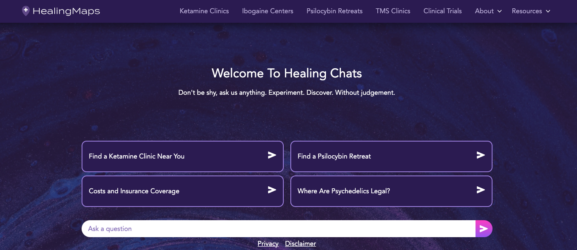Magnetic Therapy For Depression Is Here To Stay
Pulsed electromagnetic field (PEMF) therapy, or low field magnetic stimulation (LFMS), uses electromagnetic fields in an attempt to heal depression. The magnetic therapy device is also used in the treatment of non-union fractures, knee osteoarthritis, postoperative pain, and musculoskeletal pain.
We can refer to PEMF therapy as magnetic therapy for short. But we should stress that this treatment is distinct from what is more commonly known as magnetic therapy — a pseudoscientific magnetic device that offers no more benefit than sham devices devoid of a magnet. Despite a lack of scientific evidence to support claims that the device works, wearable magnets are still extremely popular.
Many practitioners who use this kind of device claim that it targets meridian points, a concept in traditional Chinese medicine (TCM) that refer to paths through which the life force (“chi”) flows. Scientists have not found evidence that supports the existence of meridian points or chi, however.
PEMF therapy is more evidence-based, in contrast, and its usefulness in treating depression is why it’s likely to grow in popularity. Indeed, forecasts for the global PEMF therapy devices market is high, with an expectation of $743.21m by 2027, rising at a market growth of 10.3 percent during the forecast period.
There are many reasons why this form of magnetic therapy is here to stay, which are worth exploring.
(Note: throughout this article, magnetic therapy will refer to PEMF therapy or LFMS, not the pseudoscientific alternative medicine practice that uses static magnets. Magnetic pulse therapy and magnetic field therapy will also refer to PEMF.)
RELATED: Fisher Wallace Stimulator vs. TMS Therapy
What Is Magnetic Therapy?
PEMF therapy is a drug-free, non-invasive, pain-relief treatment. Its intention is to promote accelerated healing for ailments and injuries. In addition, it seems that this magnetic therapy can help alleviate the symptoms of depression for many people, including those who struggle with treatment-resistant depression (TRD).
PEMF therapy can be a whole-body (100 trillion cells) battery recharger. It helps to bring energy back to cells with less charge, allowing them to function properly once again, therefore enhancing the body’s natural recovery process.
You can use this kind of magnetic therapy to supplement and enhance existing healthcare treatments. PEMF apparatus includes various devices such as full body mats, localized pad applicators, and pinpointed probe or “spot” applicators.
PEMF therapy is distinct from the pseudoscientific magnetic therapy described earlier. The latter involves static magnets that produce a constant magnetic field. This low-strength field does not change. PEMF, on the other hand, lets you control the magnetic field, and you can switch the field on and off.
PEMF therapy is frequency-based and is applied to either the whole body or parts of the body. Static magnets, however, have fixed strengths. Most have a shallow penetration into the body, resulting in a limited ability to affect deeper tissues. They can rarely treat all the cells of the body simultaneously. In contrast, PEMF waves can penetrate deep into the body’s tissues and affect all of the body’s cells.
How Does Magnetic Therapy Work?
PEMF therapy works by directing small amounts of energy toward a specific part of your body or the whole body via a specialized magnetic device.
Traditionally, magnetic pulse therapy has been used to treat acute and chronic pain by reducing inflammation.
There is also some evidence that magnetic field therapy can help alleviate the symptoms of depression. It’s possible this may work in a similar way to the treatment of pain, given that inflammation plays a role in the mental health condition. Depression has also been referred to as an inflammatory disease.
It’s thought that PEMF therapy improves circulation and cellular functioning by increasing the body’s ability to release nitric oxide. The release of nitric oxide is a common healing mechanism that activates following injuries, and it may help reduce inflammation.
While magnetic therapy is a promising option for pain management and the treatment of depression, it’s unclear whether it can lead to any long-term improvements. More research is needed to better understand magnetic pulse therapy’s potential benefits.
A doctor may consider PEMF therapy as a complement to other treatment measures for depression, rather than as a standalone treatment option.
RELATED: Holotropic Breathwork: What It Is, And What Happens During An Experience
Magnetic Therapy For Depression
Depression is a common mental disorder, which is estimated to affect five percent of adults globally. It is a leading cause of disability worldwide and a major contributor to the overall global burden of disease.
Depression can be mild, moderate, and severe. Many individuals also suffer from TRD, which is a type of depression that doesn’t improve after someone has tried at least two antidepressants. That’s the standard way TRD is defined, although experts don’t agree on one definition of this form of depression.
TRD does not mean someone cannot respond well to any treatment. Indeed, many alternatives to antidepressants can be effective in this regard, including magnetic therapy.
How Does Magnetic Pulse Therapy Ease Depression?
One of the key ways that magnetic field therapy may help alleviate depression is by improving sleep. Depression worsens sleep, leading to more restless nights overall.
PEMF therapy can imitate the brain’s natural rhythm at rest and train the brain to follow that rhythm. In this way, it can promote deep sleep.
Moreover, PEMF therapy can address the hormonal imbalances that may, for some people, be associated with anxiety and depression issues. Magnetic pulse therapy addresses these imbalances by penetrating deeply and directly into the brain.
PEMF can affect the glucose metabolism of brain regions linked to anxiety and depression. It can also change certain neuron networks and their electrical activities, altering brain regions that control mood.
Some believe that PEMF therapy also benefits depression through its effects on nitric oxide. This important molecule helps with vasodilation or keeping the blood vessels supple and strong.
In 2018, scientists from the Institute of Anatomy, Germany, conducted a study to investigate the cellular mechanism of PEMF. They found that PEMF can trigger voltage-gated calcium channels, which may help in the production of nitric oxide. They concluded that, when used correctly, PEMF can lead to reduced inflammation and improved cellular resilience.
When cellular dysfunction occurs, reactive oxygen species (ROS), also known as free radicals, thrive. This can lead to cancer and many other conditions and symptoms, including depression. PEMF therapy as an effective technology modulates ROS and production, thereby enhancing cellular energy levels.
In a research review by scientists from the University of Groningen, Netherlands, it was shown that PEMF produces antidepressant effects due to its effects on local brain activity and connectivity.
How Effective Is Magnetic Therapy For Depression?
There is a growing body of evidence to support the use of magnetic therapy for depression:
- A 2010 study found that transcranial PEMF treatment was superior to placebo treatment in patients with TRD.
- In a 2014 study, Harvard University researchers showed that there was more than a 10 percent improvement in patients with depression who received PEMF therapy.
- A 2019 12-week clinical trial found that PEMF can effectively treat anxiety, depression, pain, and quality of life, offering a significant improvement compared to hot pack and TENS (transcutaneous electrical nerve stimulation).
- A 2020 8-week study revealed that transcranial PEMF therapy can enhance the antidepressant effects of ongoing medication.
However, you should be aware that some evidence conflicts with these positive results. For example, a 2021 study published in the Journal of Affective Disorders found that transcranial PEMF resulted in no antidepressant effect in patients with TRD. But there are some caveats. As the authors of the study conclude:
“Treatment with this type of active tPEMF was not superior to sham in patients with TRD. This is in contrast to a previous study using a similar design and power calculation, but a higher magnetic field strength, that reported improvement of depression after treatment with tPEMF compared to sham. An important limitation of our study was the fact that no different dosing regimens were tried.”
Ideally, magnetic therapy for depression should improve one’s social and physical lifestyle. This could include working out, playing sports, practicing yoga, or running. An impact on nutrition may occur, as your cells need protein and other vital ingredients for recuperation and proliferation.
RELATED: TMS Therapy And Treatment: Pros & Cons
What Are The Side Effects Of Magnetic Therapy?
If you have interest in using magnetic field therapy for depression, you may be wondering what the side effects are. You’ll be glad to know that there are no known significant side effects from the treatment. Side effects are possible, but they are rare. They include:
- Pain
- Muscle aches
- Nausea
- Dizziness
- Mild headaches
- Lethargy
- Fatigue
When side effects do occur, they are temporary and tend not to last long. Acclimating your body to PEMF therapy will allow you to overcome any side effects you may experience. Another way to lessen any side effects you might experience from magnetic pulse therapy is to stay hydrated. So be sure to drink plenty of water before and after treatment.
The side effects of antidepressants, in contrast, occur more often and are more wide-ranging. For many people, these side effects are extremely unpleasant and can often be a reason why people discontinue treatment or seek out alternatives.
Based on the evidence in favor of magnetic therapy and its side effect profile, this is an option worth considering for many people seeking relief from depression.
RELATED: fNIRS: What Is It, And What Does It Have To Do With Psychedelics?



